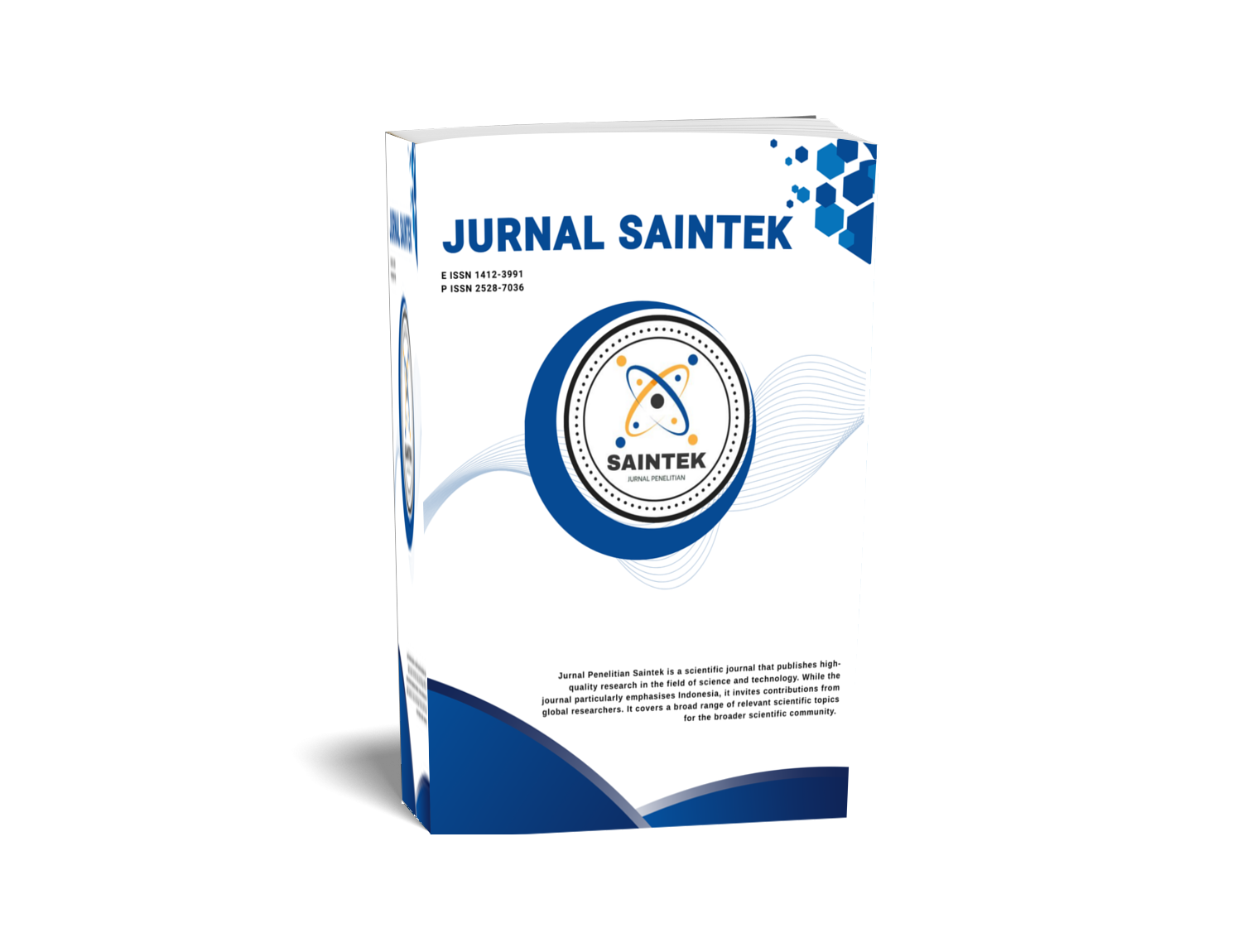BIOPLASTIK NATA DE CASSAVA AS MATERIAL EDIBLE FILM ENVIRONMENTALLY FRIENDLY
DOI:
https://doi.org/10.21831/jps.v16i2.3391Keywords:
Biodegradation, bioplastic, nata de cassava, celluloseAbstract
This research aimed to synthesize friendly plastic by using waste. Waste from cassava is made nata with using acetobacter xylinum. Characterizations of bioplastics were functional groups using IR, thermal properties using Differential Thermal Analysis, crystallinity using X-Ray Diffractometry, mechanical properties i.e. strength at break and strain at break, surface observing by using Scanning Electron Microscopy and biodegradation test using activated sludge. The primary component of nata de cassava was cellulose polymer. That is showed by functional groups i.e. –OH free, C-H allifatic, C-O, structure of piran ring, and È•-1,4-glikosidik link. That cellulose is supported by XRD diffractogram for film, film of nata de cassava had crystalline phase 1D and 1E at 15° dan 22,5°. The pellicle of cellulose is also supported SEM photo. Nata de cassava was stable film thermally, is showed by 20% of mass loss at 400°C. The biodegradation caused breaking of È•-1,4-glikosidik link until cellulose molecule dissociated to glucose molecules.
References
Anggara. (2001). Pati tapioka dan pati jagung. www.Natadecassava.wordpress. com. Diunduh pada tanggal 1 Januari 2010.
Averous, Luc. (2002). "Biodegradable multiphase systems based on plasticized starch: a review". Journal of Macromolecular Science, United Kingdom.
Barud, H.S., C. A. Ribeiro, Marisa S. Crespi, M. A. U. Martines, J. Dexpert-Ghy, R. F. C. Marques, Y. Messadde1 and S.J.L. Ribeiro. (2007). "Thermal Characterization of Bacterial Cellulose-Phosphate Composite Membrane". Journal of Thermal Analysis and Calorimetry, Vol 87 (3), 815-818.
Bourtoom. (2006). "Effect of plasticizer type and concentration on the properties of edible film from water-soluble fish proteins in surimi wash-water". Food Science and Technology International, Vol. 12, No. 2, 119-126.
Budi Santoso. (2006). "Karakterisasi komposit edible film buah kolang-kaling (Arenge Pinnata) dan Lilin Lebah (Beeswax)". Jurnal Teknologi dan Industri Pangan, Vol 17.
Eli Rohaeti, N.M. Surdia, C.L. Radiman, E. Ratnaningsih. (2003). "Pengaruh variasi komposisi amilosa terhadap kemudahan biodegradasi poliuretan". Jurnal Matematika & Sains, Volume 8 No.4, 157- 161.
Eli Rohaeti, N.M.Surdia, C.L.Radiman, E. Ratnaningsih. (2004). "Pengaruh dua macam perlakuan mikroorganisme terhadap kemudahan degradasi poliuretan hasil sintesis dari monomer Polietilen Glikol berat molekul 400 dengan Metilen-4,4'-difenildiisosianat". Proc. ITB Sains & Tek., Volume 36A No.1, 1-9
Eli Rohaeti dan Senam. (2008). "Efek minyak nabati pada biodegradasi poli uretan hasil sintesis dari PEG400 dan MDI". Laporan Penelitian. Jakarta: Dikti.
Jan van Beilen. (2006). http://www. bioplasticsmagazine.net. Diakses tanggal 1 Januari 2010.
Linda Tokarz. (2007). "Edible films made from dairy, biofuel byproducts". Agricultural Research Magazine, May/June 2007.
Pongchayont Sirikhajornnam dan Panu Danwanichakul. (2006). http://id.shvoong. com/exact-sciences/1803964-proses pembuatan-nata-coco, Diakses tanggal 1 Januari 2010.
Purnomo, Dayu Senoaji ANP. (2009). "Pembuatan dan karakterisasi edible film dari pati ubi kayu dan ganyong dengan penambahan sorbitol dan gliserol". Skripsi, Jurusan Kimia FMIPA Universitas Negeri Malang.
Schnabel, W. (1981). Biodegradation dalam Polymer Degradation, Principles and Practical Applications. New York: Macmillan Publishing Co, Inc., 154- 176.
Wahyono. (2009). "Karakteristik edible film berbahan dasar kulit dan pati biji durian (durio sp) untuk pengemasan buah strawberry". Tesis, Universitas Muhammadiyah Surakarta.
Weiping Ban et al. (2005). "Improving the physical and chemical functionally of starch-derived films with biopoly-mers". Journal of Applied Polymer Science 2006 Vol. 100, United States.
Downloads
Published
How to Cite
Issue
Section
Citation Check
License
Who Can Submit?
Any individual may submit an original manuscript for consideration for publication in Jurnal Penelitian Saintek as long as they hold the copyright to the work or are authorized by the copyright owner(s) to submit it. Authors retain initial ownership of the copyrights to their works prior to publication, except in cases where, as a condition of employment, they have agreed to transfer copyright to their employer.
User Rights
Jurnal Penelitian Saintek is an Open Access journal. Users are granted the right to read, download, copy, distribute, print, search, or link to the full texts of articles, provided they comply with the conditions of the Creative Commons Attribution-ShareAlike License 4.0 (CC BY-SA 4.0).
https://creativecommons.org/licenses/by-sa/4.0/
Author Rights
Authors retains copyrights.
Jurnal Penelitian Saintek by http://journal.uny.ac.id/index.php/saintek is licensed under a Creative Commons Attribution-ShareAlike 4.0 International License.









